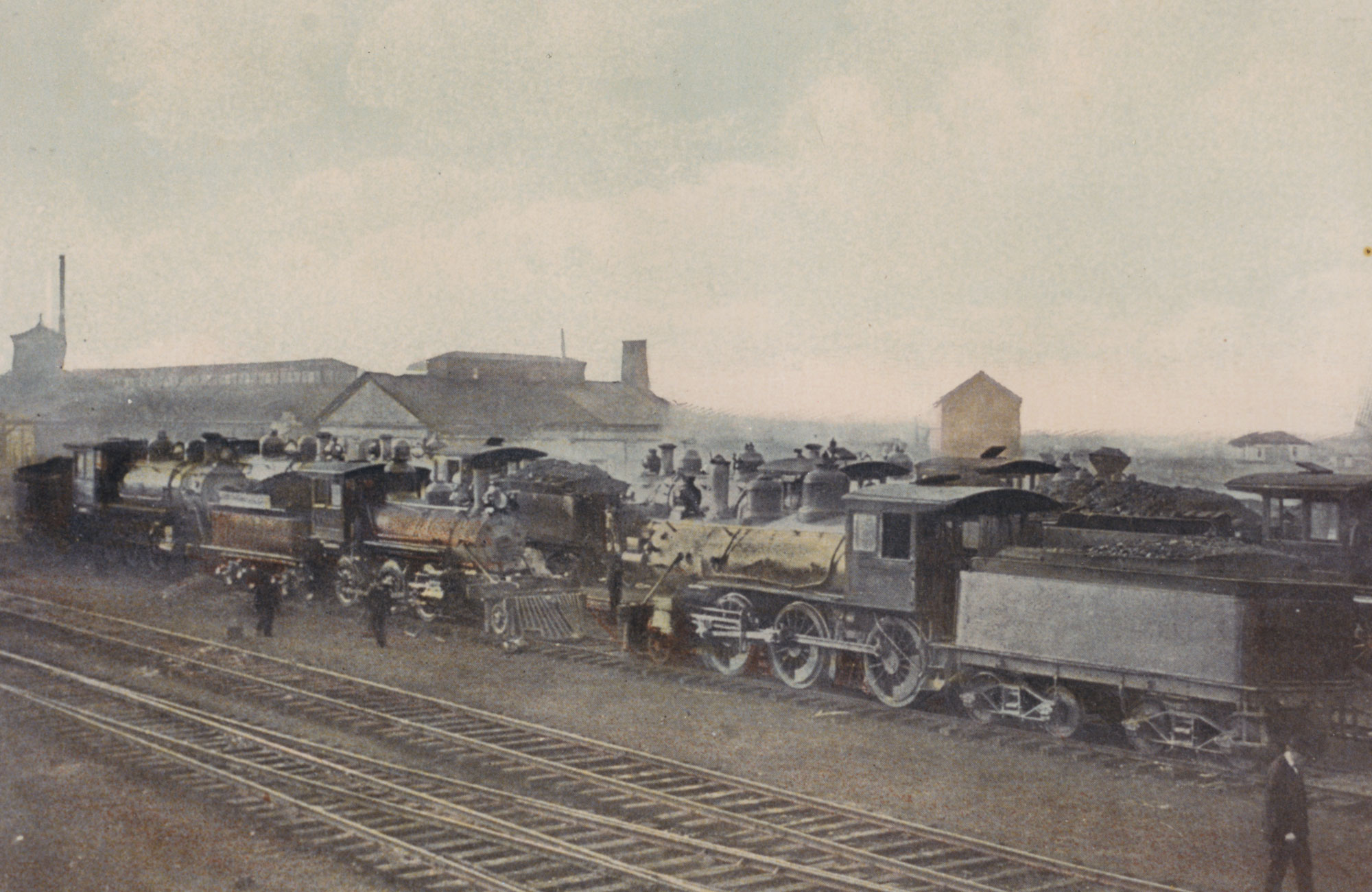The city of Charleston introduced South Carolina to the railroad in 1827 when it formed the state’s first railroad company, The South Carolina Rail Road Company. The economically depressed city founded the railroad company in hopes to boost export revenue to the port city. The Charleston & Hamburg line was completed in 1831. Its total length was 136 miles, and it spanned the lower portion of the state connecting the cities of Charleston and Hamburg (present day Augusta). In 1842, Charleston’s S.C.R.R. completed a second railroad line named the Branchville & Columbia line. This new line connected the state midland city of Columbia to the southern town of Branchville, which was the stop located at the central most point on the Charleston & Hamburg line. By the year 1842, the city of Charleston had successfully built a railroad infrastructure that established it as the sole means of coastal export for all the plantations located in the southern half of South Carolina.
The railroads of the Pee Dee region of South Carolina in the 1860s
Charleston’s unanswered railroad dominance in the state would prove to be short lived. In 1846, Wilmington North Carolina, another depressed port city, entered the picture. The city of Wilmington had successfully lobbied for legislature in both North Carolina and South Carolina that chartered a new railroad company called the Wilmington & Manchester Rail Road Company. Construction began almost immediately to connect the 162 miles between the eastern port terminus of Wilmington N.C. to the western terminus of Manchester S.C. The village of Manchester was chosen as the western terminus for its proximity to the South Carolina Rail Road Company’s Branchville & Columbia line. It was the intention of the city of Wilmington to bypass Charleston and establish itself as the chief city of export for the northeastern region of South Carolina. The W&MRR was the first railroad present in South Carolina’s northeastern Pee Dee region, and it was also the first present of the three railroads that would eventually lead to the development of the village of Florence, South Carolina.
While the Wilmington & Manchester was still under construction (from both the Wilmington & Manchester sides), the second of the Pee Dee’s big three railroads was charted in 1849. It was to be built by the Cheraw & Darlington Rail Road Company. The Cheraw & Darlington line was established as a feeder line to the larger Wilmington & Manchester line. The Cheraw & Darlington Railroad was to lay down nearly 40 miles of track between the northern terminus of Cheraw in South Carolina’s Chesterfield District to a southern terminus whose exact location in the southern portion of the South Carolina’s Darlington District had yet to be determined.
In the next post of our Story of Florence series, we will discuss the completion of these railroads which led to the founding of Florence. If you would like to learn more about Florence SC, check out the following sources used to help author this post:
Books:
Rise Up So Early A History Of Florence County South Carolina, by G. Wayne King.
Village to City Florence SC 1853-1893, by Eugene N. Zeigler.
Web Resources:
The Georgetown County Digital Library, Website, Dr. G. Wayne King Slide Collection.











